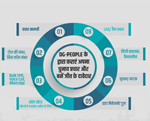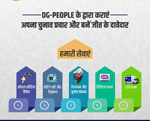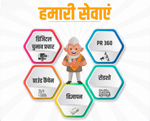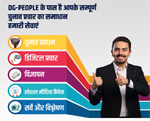The heart of any political campaign is the war room, a central hub where strategists, campaign staff, and volunteers come together to plan, execute, and monitor campaign activities. It's a dynamic environment that buzzes with activity throughout the day, filled with screens displaying data, whiteboards covered in plans and strategies, and people working tirelessly to ensure victory on election day.
The Layout:
A typical war room is a large, open space divided into different sections based on function. Some common areas include:
- ⬗ Situation Room: This is the central command center, where key campaign staff gather to discuss strategy, analyze data, and make decisions. It usually has a large screen displaying key metrics such as poll numbers, voter outreach statistics, and fundraising totals.
- ⬗ War Room Walls: Walls are often covered in whiteboards, maps, charts, and graphs that track campaign progress, opponent activity, and key demographics. Sticky notes, photos, and newspaper clippings can also be used to keep track of important information.
- ⬗ Data Center: This area houses the computers and servers that power the campaign's data analysis and communication systems. Data analysts work here to crunch numbers, identify trends, and provide insights to campaign staff.
- ⬗ Media Center This section is responsible for managing media relations and outreach. It may include a press room, a video editing studio, and a social media command center.
- ⬗ Volunteer Hub: This area is dedicated to volunteer coordination and training. Volunteers can come here to learn about campaign tasks, sign up for shifts, and get updates on the latest campaign activities.
Technology:
Technology plays a vital role in modern election war rooms. Some of the key technologies used include:
- ⬗ Data analysis software: This software is used to analyze voter data, identify trends, and target voters with personalized messages.
- ⬗ Communication platforms: These platforms allow campaign staff to communicate with each other, volunteers, and voters quickly and efficiently.
- ⬗ Social media monitoring tools: These tools help campaigns track what people are saying about them online and respond to negative comments or misinformation.
- ⬗ Mapping software: This software is used to map out campaign activities, identify key voter demographics, and target outreach efforts.
Message Development and Branding:
• Crafting compelling campaign messages that resonate with the target voters.
• Developing a strong and consistent campaign brand, including slogans, and visual elements, to enhance recognition and recall value.
Ground Operations and Grassroots Mobilization:
• Organizing and coordinating grassroots activities, including door-knocking, phone banking, and community events.
• Implementing voter outreach strategies to connect with local communities and build support at the grassroots level.
Data Analytics and Targeting:
• Utilizing data analytics to identify key voter demographics, preferences, and behaviors.
• Implementing targeted outreach campaigns to specific voter segments, optimizing resource allocation for maximum impact.
Event Planning and Logistics:
• Planning and executing campaign events, including rallies, town halls, and fundraisers.
• Managing logistics such as venue selection, permits, security, and participant coordination.














